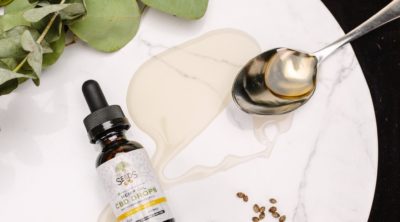
Although most male yeast infections can be managed with over-the-counter antifungal medicines, there are a few home remedies which may be equally helpful.
Candida albicans is part of the normal flora in the human body. Only when it grows uncontrollably, it causes a full blown yeast infection…
Although it is possible for a man to contract a yeast infection from an infected partner, it is not so in every case. Rarely candidiasis is found to be transmitted sexually. One main cause of this infection is prolonged use of antibiotics. And this applies to both men and women. These drugs can eliminate good bacteria that keep a check on the population of the Candida albicans. So once these bacteria are gone, the yeast fungus grows unchecked resulting in a full-blown infection. Having a compromised immune system, or a chronic condition such as diabetes also heightens the risk of yeast infections in both men and women.
How to Manage Male Yeast Infection at Home
☞ It is important to inhibit the growth of the yeast by reducing the intake of sugar. Keep the consumption to a limited level which would be enough to meet daily energy requirements. Gluten-based foods, yeast foods, dairy products, soy foods, tuna, swordfish, shark, trans fats, splenda, etc., must be avoided, as these are rich sources of sugar. Commercial foods, fried foods, and other simple carbohydrates should also be refrained from in order to lower the growth of Candida.
☞ Plain, unsweetened yogurt is an excellent natural treatment for yeast infections. It increases the number of “friendly bacteria” lactobacillus acidophilus, which help bring down the population of yeast and restrict their growth. It is recommended to take 2-3 glasses of sugarless yogurt everyday. These friendly bacteria are also present in probiotics.
☞ Colon cleansing also helps treat yeast infection. An acidic environment favors such infections. A proper colon cleansing regimen helps in getting rid of toxins and waste bacteria from the body, and reduces the acidity level. Drinking plenty of water ensures effective colon cleansing, as frequency of urination will increase and more toxins will be flushed out from the body.
☞ Garlic is known for its anti-bacterial and antifungal properties. Take one clove of garlic daily. You can use a garlic paste and take it with your regular meals, or you can also gulp a whole clove of it with water.
☞ Anecdotally, most people have reported to have benefited from the topical application of diluted tea tree oil to yeast-infected areas; in this case, the male genital areas. Tea tree oil can be diluted with olive or sweet almond oil, and can be applied using a cotton swab. Note that full strength tea tree oil must never be applied to sensitive areas, especially the genital region.
☞ Taking warm sitz baths provides relief from the symptoms of yeast infection. Add a cup or two of vinegar into the water and soak for sometime. This helps soothe the skin and reduce itching. Alternatively, you can also use apple cider vinegar. Vinegar is known for its powerful antifungal properties, and it restores the body’s pH balance, which in turn restricts yeast growth.
Some Self-Care Measures
✔ Candida albicans thrives in warm and moist conditions, especially areas with little or no oxygen. So it is important that you use every bit of your towel to dry yourself after taking a shower or bathing.
✔ Clothes made of cotton fabric are more breathable and airy. They allow moisture to evaporate, discouraging yeast growth. If you are prone to yeast infections, then avoid wearing briefs made of nylon, lycra or other synthetic materials.
✔ Avoid being in a swimsuit after swimming. Once you are done, take a shower, and dry yourself immediately. Not to mention, wear clean, fresh clothes.
Although many have reported success with the above mentioned home remedies, most of them are not backed up by satisfying clinical evidence. While some clinical trials were conducted to support the benefits of these remedies in the treatment of yeast infection, their results have been mostly inconclusive. To determine how effective, and more importantly how safe is the use of such remedies, randomized, and well-structured trials are necessary so as to make suitable recommendations. So it is advisable to talk to a doctor before going for any of these home treatment methods to cure yeast infection. As they say, it is always safe to err on the side of caution. Take care!
Disclaimer: The information provided in this article is solely for educating the reader. It is not intended to be a substitute for the advice of a medical expert.


